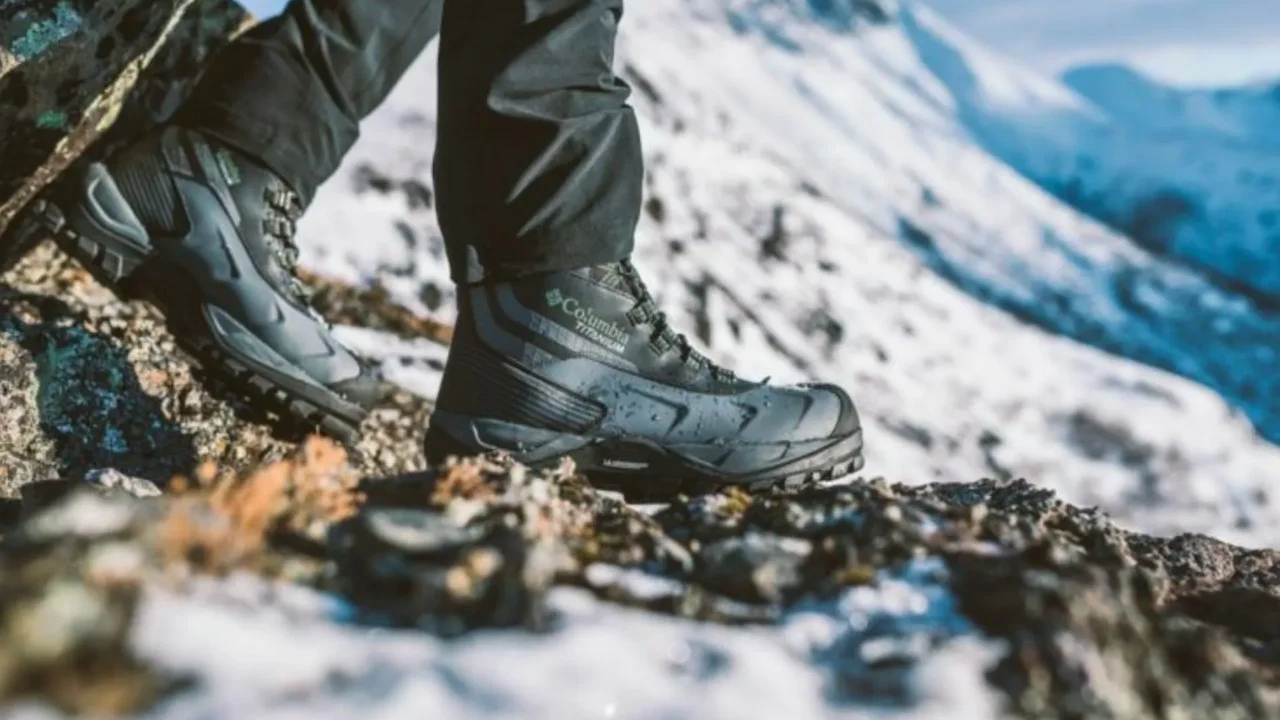
Managing Asthma in Cold Air Breathe Easier This Winter
Winter brings a unique set of challenges for individuals with asthma. The crisp, cold air, while invigorating for some, can be a significant trigger for asthma symptoms, leading to coughing, wheezing, shortness of breath, and chest tightness. Understanding why cold air affects asthma and implementing effective management strategies are crucial for enjoying the winter months without constant worry. This comprehensive guide will delve into the physiological reasons behind cold-induced asthma, offer practical tips for prevention and management, and recommend specific products to help you breathe easier and stay active.
Why Cold Air Triggers Asthma Understanding the Physiology
When you breathe in cold, dry air, your airways react in several ways that can exacerbate asthma symptoms. Firstly, the cold air causes the smooth muscles around your airways to constrict, a phenomenon known as bronchospasm. This narrowing of the airways makes it harder for air to pass through, leading to shortness of breath and wheezing. Secondly, cold air is typically very dry. Your airways naturally warm and humidify the air you breathe before it reaches your lungs. When the air is cold and dry, your airways work harder, leading to increased water loss and irritation of the delicate lining of the bronchial tubes. This irritation can trigger inflammation, further narrowing the airways and increasing mucus production. For individuals with exercise-induced bronchoconstriction (EIB), cold air can be an even more potent trigger, as the increased breathing rate during physical activity amplifies the effects of cold, dry air on the airways. Understanding these mechanisms is the first step in developing effective strategies to manage your asthma in winter.
Pre-Activity Preparation Essential Steps for Winter Workouts
Before venturing out into the cold for any activity, proper preparation is key to minimizing asthma flare-ups. Always use your prescribed quick-relief inhaler (e.g., albuterol) 15-30 minutes before exercise, as directed by your doctor. This pre-treatment helps to open up your airways and prevent bronchospasm. Additionally, a thorough warm-up routine is essential. Start with 5-10 minutes of light aerobic activity, such as walking or gentle jogging, to gradually acclimate your lungs to the colder air. This gradual exposure helps to reduce the sudden shock to your airways. Consider wearing layers of clothing that can be easily removed as your body temperature rises, preventing overheating while still providing insulation. Hydration is also vital; drink plenty of water before, during, and after your activity to keep your airways moist and reduce irritation. These simple yet effective steps can significantly reduce the likelihood of an asthma attack during winter activities.
Protective Gear for Cold Air Breathing Masks and Scarves
One of the most effective ways to mitigate the impact of cold air on your airways is to wear protective gear that warms and humidifies the air before you inhale it. A simple scarf wrapped around your mouth and nose can make a significant difference. However, specialized masks are designed specifically for this purpose, offering superior protection. These masks often feature moisture-wicking materials and designs that create a microclimate of warm, humid air around your mouth and nose. Let's explore some popular options:
Product Recommendation The Respro Sportsta Mask
The Respro Sportsta Mask is a popular choice among athletes and individuals with respiratory sensitivities. It features a DACC (Dynamic Activated Charcoal Cloth) filter that filters out airborne irritants, and its neoprene construction helps to warm and humidify inhaled air. The mask is designed for a snug fit, ensuring that most of the air you breathe passes through the filter. It's particularly useful for activities like cycling, running, or even just walking in very cold or polluted environments. The filters are replaceable, making it a long-term investment. The typical price range for the Respro Sportsta Mask is around $40-$60, with replacement filters costing about $15-$25.
Product Recommendation The AirTrim Cold Weather Mask
The AirTrim Cold Weather Mask is specifically engineered to warm and humidify cold air. It uses a unique heat exchanger system that captures the warmth and moisture from your exhaled breath and transfers it to the inhaled air. This process significantly reduces the dryness and coldness of the air reaching your lungs. The AirTrim mask is lightweight and comfortable, making it suitable for various winter activities, from skiing to shoveling snow. It's often recommended by doctors for individuals with cold-induced asthma or exercise-induced bronchoconstriction. The price for the AirTrim Cold Weather Mask typically ranges from $50-$80.
Product Recommendation The Buff Original Multifunctional Headwear
While not a specialized mask, the Buff Original Multifunctional Headwear is an incredibly versatile and affordable option for basic cold air protection. Made from seamless microfiber, it can be worn in over 12 different ways, including as a neck gaiter, balaclava, or face mask. When pulled up over your mouth and nose, it provides a layer of insulation that helps to warm the inhaled air. While it doesn't offer the advanced filtration or heat exchange of the specialized masks, its simplicity, comfort, and affordability make it an excellent everyday option for milder cold conditions or as an additional layer. The Buff Original typically costs around $15-$25.
Comparison and Usage Scenarios
When choosing between these products, consider the severity of your asthma, the intensity of your activity, and the ambient temperature. For severe cold-induced asthma or high-intensity activities in very cold conditions, the AirTrim Cold Weather Mask or Respro Sportsta Mask would be more beneficial due to their specialized warming and filtering capabilities. The Respro Sportsta also offers pollution filtration, which is a bonus if you're exercising in urban areas. For moderate cold or less strenuous activities, or as a general protective layer, the Buff Original is a practical and comfortable choice. Many individuals find that combining a Buff with a specialized mask provides optimal protection and comfort. For instance, wearing a Buff as a neck gaiter and then pulling a Respro or AirTrim mask over it can offer enhanced warmth and a secure fit.
Medication Management Staying on Track with Prescriptions
Consistent and correct medication management is paramount for controlling asthma, especially during the winter months. Ensure you are taking your long-term controller medications (e.g., inhaled corticosteroids) exactly as prescribed by your doctor, even if you are feeling well. These medications work to reduce inflammation in your airways over time, making them less reactive to triggers like cold air. Do not skip doses, as this can lead to a build-up of inflammation and increased susceptibility to asthma attacks. Always carry your quick-relief inhaler with you, and ensure it is not expired. Keep it in an easily accessible pocket, as cold temperatures can sometimes affect the delivery of medication if the inhaler itself gets too cold. If you find yourself relying on your quick-relief inhaler more than twice a week (excluding pre-exercise use), it's a sign that your asthma may not be well-controlled, and you should schedule an appointment with your doctor to review your treatment plan. They may adjust your medication dosage or recommend additional therapies.
Indoor Air Quality Maintaining a Healthy Home Environment
While outdoor cold air is a major concern, the quality of indoor air during winter can also significantly impact asthma symptoms. Homes tend to be sealed up tightly in winter, trapping allergens and irritants indoors. Dry indoor air from heating systems can also irritate airways. Consider using a humidifier to add moisture to the air, aiming for a humidity level between 30% and 50%. Be sure to clean humidifiers regularly to prevent mold growth. Regularly clean and dust your home to reduce dust mites, pet dander, and other allergens. Use a vacuum cleaner with a HEPA filter. Avoid using wood-burning fireplaces or stoves, as the smoke can be a significant asthma trigger. Ensure proper ventilation when cooking or using cleaning products. Air purifiers with HEPA filters can also be beneficial in removing airborne particles and allergens. By maintaining good indoor air quality, you create a safer and more comfortable environment for your lungs.
Recognizing Symptoms and Emergency Preparedness
It's crucial to be able to recognize the early signs of an asthma flare-up, especially when engaging in winter activities. Symptoms may include increased coughing, wheezing, shortness of breath, chest tightness, or a drop in your peak flow meter readings. If you experience these symptoms, stop your activity immediately and use your quick-relief inhaler as prescribed. If symptoms do not improve after using your inhaler, or if they worsen, seek immediate medical attention. Always have an asthma action plan developed with your doctor, outlining steps to take during an asthma attack. Share this plan with family members, friends, or anyone you regularly engage in activities with. In case of a severe asthma attack, know when to call emergency services. Being prepared can make a critical difference in managing an asthma emergency.
Staying Active Safely Enjoying Winter Sports with Asthma
Having asthma doesn't mean you have to sit out on all the fun winter activities. With proper management and precautions, you can still enjoy skiing, snowboarding, ice skating, and more. Choose activities that allow you to control your exertion level, especially when first starting out. Listen to your body and take breaks when needed. If you're participating in a group activity, inform your companions about your asthma and where your inhaler is located. Consider indoor alternatives for exercise on extremely cold or windy days, such as indoor swimming, gym workouts, or yoga. Remember, staying physically active is beneficial for overall lung health, so finding ways to exercise safely in winter is important. By following these guidelines, you can embrace the winter season and all its adventures without letting asthma hold you back.
Diet and Hydration Supporting Lung Health in Winter
Beyond medication and protective gear, your diet and hydration play a supportive role in managing asthma, particularly in winter. Staying well-hydrated is crucial as it helps to keep the mucus in your airways thin and easier to clear, reducing irritation. Drink plenty of water throughout the day, even if you don't feel thirsty. Warm beverages like herbal tea can also be soothing. A diet rich in anti-inflammatory foods can also be beneficial. Incorporate plenty of fruits, vegetables, and omega-3 fatty acids (found in fish like salmon, flaxseeds, and walnuts). These foods can help reduce systemic inflammation, which may contribute to asthma symptoms. Avoid processed foods, excessive sugar, and unhealthy fats, which can promote inflammation. While diet alone cannot cure asthma, it can certainly support overall lung health and potentially reduce the frequency or severity of symptoms when combined with your prescribed medical treatment.
Travel Considerations for Asthmatics in Winter
If you plan to travel during the winter months, especially to colder climates or high altitudes, there are additional considerations for managing your asthma. Always carry all your medications, including your quick-relief inhaler and controller medications, in your carry-on luggage. Do not pack them in checked bags, as temperatures in the cargo hold can fluctuate, and bags can get lost. Bring extra supplies of medication in case of unexpected delays. Research the availability of medical facilities at your destination. If traveling internationally, understand the generic names of your medications in case you need a refill. Inform your travel companions about your asthma and your action plan. Consider getting a medical alert bracelet or carrying a card with your medical information. Be mindful of changes in air pressure during flights, which can sometimes affect breathing. Staying vigilant and prepared will ensure a smoother and safer travel experience.
When to Consult Your Doctor Regular Check-ups and Adjustments
Regular check-ups with your doctor or asthma specialist are essential, especially before and during the winter season. Your doctor can assess your asthma control, review your medication regimen, and make any necessary adjustments. They can also help you develop or update your asthma action plan, which is a personalized guide for managing your symptoms. If you notice your symptoms worsening, if you are using your quick-relief inhaler more frequently, or if you have any concerns about managing your asthma in cold weather, do not hesitate to schedule an appointment. Proactive management and open communication with your healthcare provider are key to living well with asthma throughout the year, including the challenging winter months.
:max_bytes(150000):strip_icc()/277019-baked-pork-chops-with-cream-of-mushroom-soup-DDMFS-beauty-4x3-BG-7505-5762b731cf30447d9cbbbbbf387beafa.jpg)






